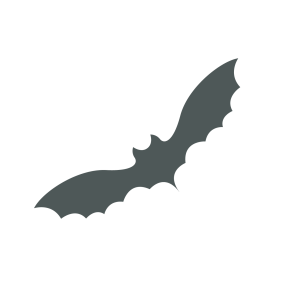

4 - 5 years (maximum life span recorded is 11 years)
Head and body length: 3.5 - 4.5cm; Wingspan: 20 - 23cm
Native and listed as Least Concern on the global IUCN Red List of Threatened Species. Protected in the UK under the Wildlife and Countryside Act 1981.
The common pipistrelle, not to be confused with the soprano pipistrelle – these species were only identified as separate species in the 90s. The common pipistrelle is smallest and most common bat in the UK. They feed on midges, moths, and other flying insects. They roost in tree holes, bat boxes and in the roof spaces of houses. During the summer, females form maternity colonies and have one pup each. They hibernate over between November and April, but may come out to feed on warm days. The common pipistrelle has dark, golden-brown fur, with a slightly paler underside and a dark mask around the face.
Can survey all-year-round. Most active from April to October. Droppings found within roosts can be analysed outside of active periods.
